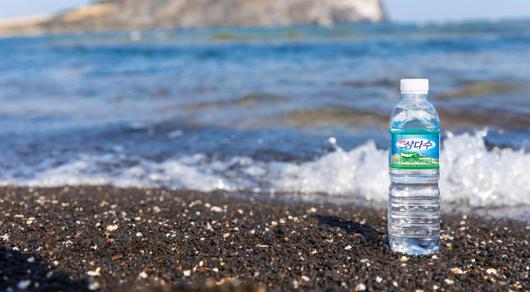 |
(Jeju Samdasoo) |
<이미지를 클릭하시면 크게 보실 수 있습니다> |
Jeju Samdasoo has maintained its position as South Korea’s top bottled water brand for an impressive 26 years, Jeju Special Self-Governing Province Development Corporation (JPDC) announced on Monday. Holding a market share that has hovered around 40 percent since its launch in 1998, Samdasoo continues to dominate the industry thanks to the natural mineral content of its volcanic bedrock water and its commitment to rigorous quality control through more than 20,000 water quality tests annually.
Unlike many bottled water companies that source water from multiple locations, Samdasoo exclusively draws its water from a sole source on Hallasan, a volcanic mountain on Jeju Island. The rainwater that seeps into the 1,450-meter-high area of Hallasan National Park filters through volcanic rock layers, producing groundwater that is rich in natural minerals and free from impurities, according to JPDC. This natural purification process allows the company to rely on simple filtration and ultraviolet sterilization without the need for complex treatments.
Samdasoo’s groundwater is naturally enriched with essential minerals such as calcium, potassium, and magnesium, eliminating the need for artificial additives. The volcanic rock layers on Hallasan contain volcanic scoria and clinker, known for their superior ability to filter contaminants, and further enhance the water’s purity.
JPDC has been acquiring land around the water source since 1996 to prevent contamination and has secured an area equivalent to the size of 100 soccer fields to date. The company also monitors the water source with 106 observation networks to ensure the purity of the groundwater.
Quality control measures include random water tests every three hours, with over 20,000 tests conducted annually. Samdasoo established a dedicated Drinking Water Research Institute in 2021 to oversee quality management and conduct research on bottled water technologies. The company has also conducted multiple tests for radioactive substances since 2011’s Great East Japan Earthquake, with no contaminants ever detected.
이 기사의 카테고리는 언론사의 분류를 따릅니다.
기사가 속한 카테고리는 언론사가 분류합니다.
언론사는 한 기사를 두 개 이상의 카테고리로 분류할 수 있습니다.
언론사는 한 기사를 두 개 이상의 카테고리로 분류할 수 있습니다.


